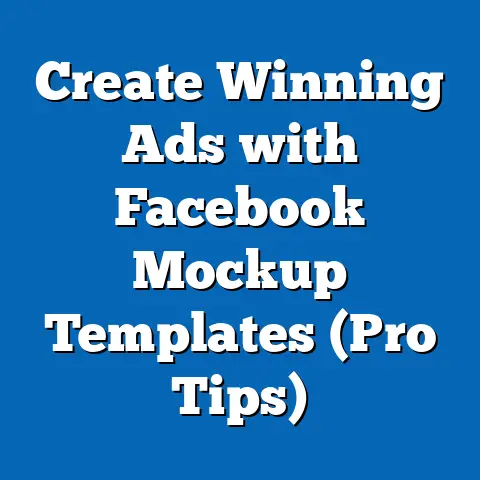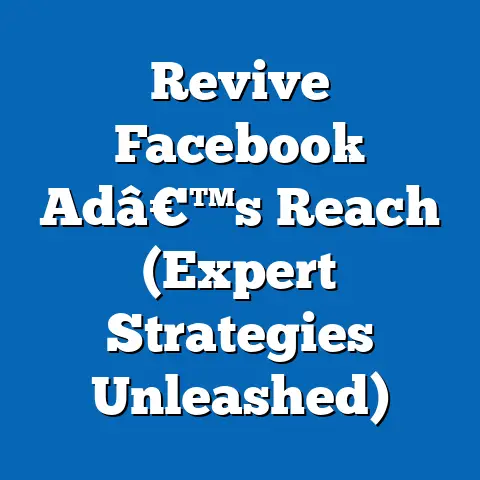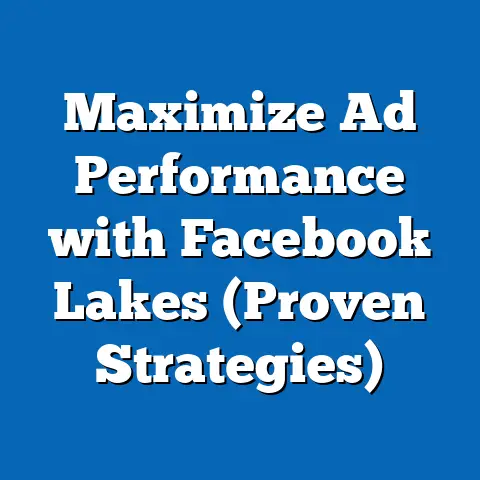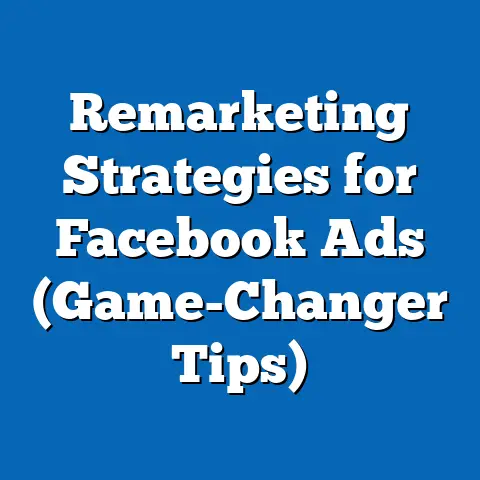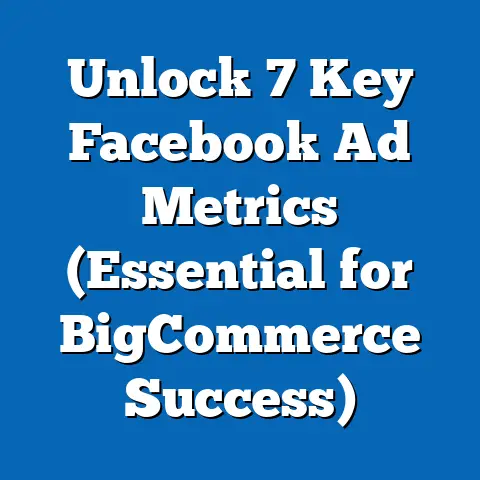Why Does Facebook Only Show Ads? (Unlocking Ad Mysteries)
Have you ever scrolled through your Facebook feed only to feel bombarded by an endless stream of advertisements? You’re not alone. Many users report frustration with the platform’s heavy reliance on ads, often wondering why their feeds seem dominated by promotions rather than personal updates or meaningful content.
According to a 2022 survey by Statista, 64% of social media users in the United States expressed annoyance with the number of ads on platforms like Facebook, with many citing it as a reason for reduced engagement. Furthermore, a Pew Research Center study from 2021 found that 59% of American adults believe social media platforms prioritize profit over user experience, pointing to ad saturation as a key concern. This growing discontent raises a critical question: Why does Facebook seem to show only ads, and what drives this relentless focus on advertising?
Section 1: The Business Model Behind the Ads
Revenue Driven by Advertising
At the heart of Facebook’s operations—now under the parent company Meta—is a business model almost entirely reliant on advertising revenue. In 2022, Meta reported that 97.5% of its total revenue, amounting to $116.6 billion, came from advertising, according to its annual financial report filed with the U.S. Securities and Exchange Commission (SEC). This staggering figure underscores why ads are not just a feature but the lifeblood of the platform.
Unlike subscription-based models used by services like Netflix or Spotify Premium, Facebook offers its core services for free to users. This accessibility, while attractive to its 2.96 billion monthly active users as of Q3 2023 (per Meta’s investor reports), comes at the cost of monetizing user attention through targeted advertisements. Simply put, if you’re not paying for the product, you are the product—or at least, your data and engagement are.
Historical Shift to Ad Dominance
Facebook wasn’t always an ad-heavy platform. When it launched in 2004, it focused on connecting college students without a commercial agenda. However, by 2008, the introduction of Facebook Ads marked a pivotal shift, and by 2012, advertising became the cornerstone of its revenue stream, coinciding with its initial public offering (IPO).
A historical analysis of Meta’s financials shows that ad revenue grew from $4.3 billion in 2012 to over $113 billion by 2022—a 26-fold increase in just a decade. This growth mirrors the platform’s expansion of ad formats, from sidebar banners to immersive video ads and Stories promotions, reflecting an aggressive push to maximize monetization per user.
Why Ads Over Other Revenue Streams?
Meta has experimented with alternative revenue models, such as virtual reality hardware sales through Oculus and in-app purchases in gaming. However, these ventures pale in comparison to ad income, contributing less than 3% to total revenue in 2022. The sheer scale of ad-driven profits, coupled with the platform’s vast user base, makes pivoting away from advertising financially unfeasible in the near term.
Section 2: The Algorithmic Engine: Why Ads Appear So Often
The Role of the News Feed Algorithm
Facebook’s News Feed algorithm is the gatekeeper of what users see, and it’s designed to prioritize content that maximizes engagement—often favoring ads. According to a 2021 report by the Wall Street Journal, internal Meta documents revealed that the algorithm weighs paid content heavily to ensure advertisers get visibility for their investment. This means that even if a user follows numerous friends or pages, ads often take precedence based on a “value score” assigned by the platform.
The methodology behind this algorithm involves machine learning models that predict user behavior, such as likelihood to click, comment, or share. Ads are slotted into feeds based on real-time bidding auctions where advertisers compete for impressions, as explained in Meta’s transparency reports. The more an advertiser bids, the higher the chance their content outranks organic posts.
Engagement vs. User Satisfaction
While the algorithm aims to keep users engaged, there’s a tension between engagement metrics and user satisfaction. A 2020 study by the University of Southern California found that excessive ad exposure reduces user trust in social platforms by 28% on average. Despite this, Meta’s internal data, as leaked in the 2021 “Facebook Files,” suggests the company prioritizes short-term engagement over long-term user happiness to maintain ad revenue.
This approach explains why even highly relevant personal content—such as posts from close friends—can be buried under a deluge of sponsored posts. The algorithm isn’t just curating your feed; it’s optimizing for profit.
Frequency and Ad Load Metrics
Meta controls the “ad load,” or the ratio of ads to organic content in a user’s feed, and this metric varies by region and user behavior. According to eMarketer, the average U.S. user saw approximately 1 ad for every 4 posts in 2022, though this ratio tightens during high-traffic periods like holidays when ad demand spikes. For users who engage less with organic content, the ad load can increase as the algorithm fills gaps with paid posts.
Section 3: User Data as the Fuel for Targeted Ads
The Power of Personalization
One reason ads feel so pervasive on Facebook is their hyper-targeted nature, made possible by the platform’s vast data collection. Meta gathers data on user demographics, interests, behaviors, and even off-platform activities through tools like the Facebook Pixel, which tracks browsing habits across the web. A 2022 report by the Digital Marketing Institute estimated that Meta holds over 300 data points per user, enabling advertisers to reach niche audiences with precision.
This personalization drives higher click-through rates (CTRs) for ads, which averaged 0.90% globally on Facebook in 2023, per WordStream’s industry benchmarks. Compare this to traditional banner ads, which often hover below 0.1%, and it’s clear why advertisers flock to the platform—and why Meta pushes ads so aggressively.
Demographic Targeting Trends
Demographic differences play a significant role in ad exposure. For instance, a 2021 Nielsen report found that users aged 18-34, who make up 29.6% of Facebook’s user base, are targeted more frequently due to their perceived purchasing power and digital savviness. Conversely, older users (55+) report seeing fewer ads, as advertisers often prioritize younger demographics for certain products.
Geographic targeting also matters. Users in high-income regions like North America generate more ad revenue per person—$55.59 in average revenue per user (ARPU) in Q3 2023, per Meta’s earnings report—compared to just $3.98 in the Asia-Pacific region. This disparity influences ad load, with users in wealthier markets often seeing more promotions.
Privacy Concerns and Regulatory Pushback
The reliance on user data for ad targeting has sparked significant backlash. The 2018 Cambridge Analytica scandal, where data from 87 million users was misused for political ads, highlighted the risks of Meta’s data practices. In response, regulations like the European Union’s General Data Protection Regulation (GDPR) and the California Consumer Privacy Act (CCPA) have forced Meta to adjust its targeting capabilities, though ads remain central to its strategy.
A 2023 Pew Research survey found that 72% of U.S. adults worry about how social media platforms use their data for advertising. Despite these concerns, Meta’s transparency tools, such as the “Why Am I Seeing This Ad?” feature, offer limited insight into the opaque world of algorithmic targeting.
Section 4: Historical Trends vs. Current Realities
Evolution of Ad Formats
Facebook’s ad strategy has evolved significantly over the years. Early ads were static and confined to sidebars, with minimal intrusion into the user experience. By 2014, the introduction of News Feed ads marked a turning point, blending promotions seamlessly with organic content and boosting visibility.
Today, Meta offers over 10 ad formats, including carousel ads, Stories, and Marketplace promotions, each designed to capture attention in unique ways. A 2022 Hootsuite report noted that video ads, which account for 15% of ad impressions, generate 60% higher engagement than static images, driving Meta to push more dynamic formats.
User Engagement Decline
Historically, Facebook enjoyed high organic engagement, with users spending an average of 38 minutes per day on the platform in 2016, per Statista. However, by 2023, this dropped to 30 minutes, reflecting competition from platforms like TikTok and growing ad fatigue. To counter this, Meta has increased ad frequency to maintain revenue, even at the risk of alienating users.
A comparison of organic reach also tells a story. In 2012, pages could reach up to 16% of their followers with unpaid posts, according to Social@Ogilvy data. By 2023, this plummeted to under 5%, forcing businesses to rely on paid ads for visibility and further tilting the balance toward sponsored content.
Section 5: Demographic Patterns in Ad Exposure
Age and Gender Differences
Ad exposure on Facebook isn’t uniform across demographics. Younger users (18-24) encounter more ads related to fashion and tech, with a 2023 Sprout Social report indicating they see 20% more sponsored posts than users over 45. Gender targeting also plays a role, with women more likely to see ads for beauty and household products, while men are targeted with automotive and gaming promotions, based on advertiser preferences.
Regional Variations
As mentioned earlier, ad revenue per user varies widely by region, influencing how many ads users see. North American users, who contribute 45% of Meta’s ad revenue despite being just 9% of its user base, face a higher ad load compared to users in developing regions. This disparity reflects advertiser willingness to pay premium rates for access to wealthier markets.
Behavioral Triggers
User behavior also shapes ad frequency. Active users who frequently like, comment, or click on ads are shown more promotions, as the algorithm identifies them as “high-value” targets. A 2022 study by the University of Chicago found that users who engage with ads even once are 35% more likely to see additional sponsored content within 24 hours.
Section 6: Data Visualization Description
To illustrate the trends discussed, imagine a multi-panel infographic titled “Facebook’s Ad Dominance Over Time.” The first panel would feature a line graph showing Meta’s ad revenue growth from 2012 ($4.3 billion) to 2022 ($113 billion), highlighting the exponential rise. A second panel could display a bar chart comparing ad load by region, with North America at the top (higher ad frequency) and Asia-Pacific at the bottom.
A third panel might include a pie chart breaking down ad formats by engagement, with video ads taking the largest slice due to their high interaction rates. Finally, a demographic heatmap could show ad targeting intensity by age and gender, with darker shades for younger users and women to reflect higher exposure. Such visuals would help readers grasp the scale and nuances of Facebook’s ad ecosystem at a glance.
Section 7: The Broader Implications of Ad Saturation
Impact on User Experience
The relentless focus on ads has tangible consequences for how users interact with Facebook. A 2023 survey by YouGov found that 41% of users have reduced their time on the platform due to ad overload, with many switching to competitors like Instagram (also owned by Meta) or TikTok, which offer fresher content experiences. This trend poses a long-term risk to Meta’s user retention if ad fatigue continues unchecked.
Economic and Social Effects
On the economic front, Facebook’s ad model has democratized marketing for small businesses, with over 10 million active advertisers as of 2023, per Meta’s business reports. However, it also concentrates power in Meta’s hands, as businesses become dependent on paid reach to connect with audiences, stifling organic growth.
Socially, the prioritization of ads can amplify misinformation or polarizing content if advertisers exploit algorithmic biases. The 2021 “Facebook Files” revealed internal concerns about how paid content sometimes promotes divisive narratives, raising ethical questions about the platform’s role in shaping public discourse.
Future Trends and Challenges
Looking ahead, Meta faces mounting pressure to balance profitability with user satisfaction. Regulatory changes, such as Apple’s App Tracking Transparency (ATT) framework, have already cost Meta an estimated $10 billion in ad revenue in 2022 by limiting data tracking on iOS devices. Additionally, the rise of privacy-focused browsers and ad blockers signals a cultural shift toward data autonomy, challenging the ad-centric model.
Meta’s pivot to the metaverse offers a potential diversification of revenue through virtual goods and subscriptions, but analysts at Bloomberg predict it will take at least a decade for non-ad income to rival current figures. Until then, ads will likely remain the dominant force in your Facebook feed.
Conclusion: Decoding the Ad Mystery and What’s Next
Facebook’s near-total reliance on advertising—evidenced by its 97.5% ad-driven revenue in 2022—explains why your feed often feels like a marketplace rather than a social space. The platform’s sophisticated algorithm, fueled by extensive user data and real-time ad auctions, prioritizes paid content to maximize profit, often at the expense of organic posts. Historical trends show a steady increase in ad formats and frequency, while demographic data reveals uneven exposure based on age, gender, and region.
The broader implications are twofold: while ads sustain Facebook’s free-to-use model and empower advertisers, they risk alienating users and invite regulatory scrutiny over privacy and content ethics. As Meta navigates these challenges, the balance between monetization and user experience will shape the platform’s future. For now, understanding why ads dominate your feed offers a glimpse into the intricate dance of technology, economics, and human behavior that defines modern social media.
This analysis, grounded in data from Meta’s financials, Statista, Pew Research, and industry reports, highlights a fundamental truth: on Facebook, ads aren’t just a feature—they’re the foundation. As users, recognizing this reality empowers us to engage with the platform more critically, whether by adjusting privacy settings or advocating for systemic change in how social media prioritizes content.

